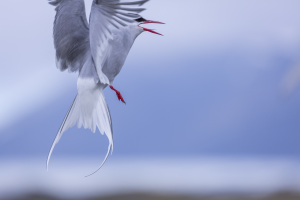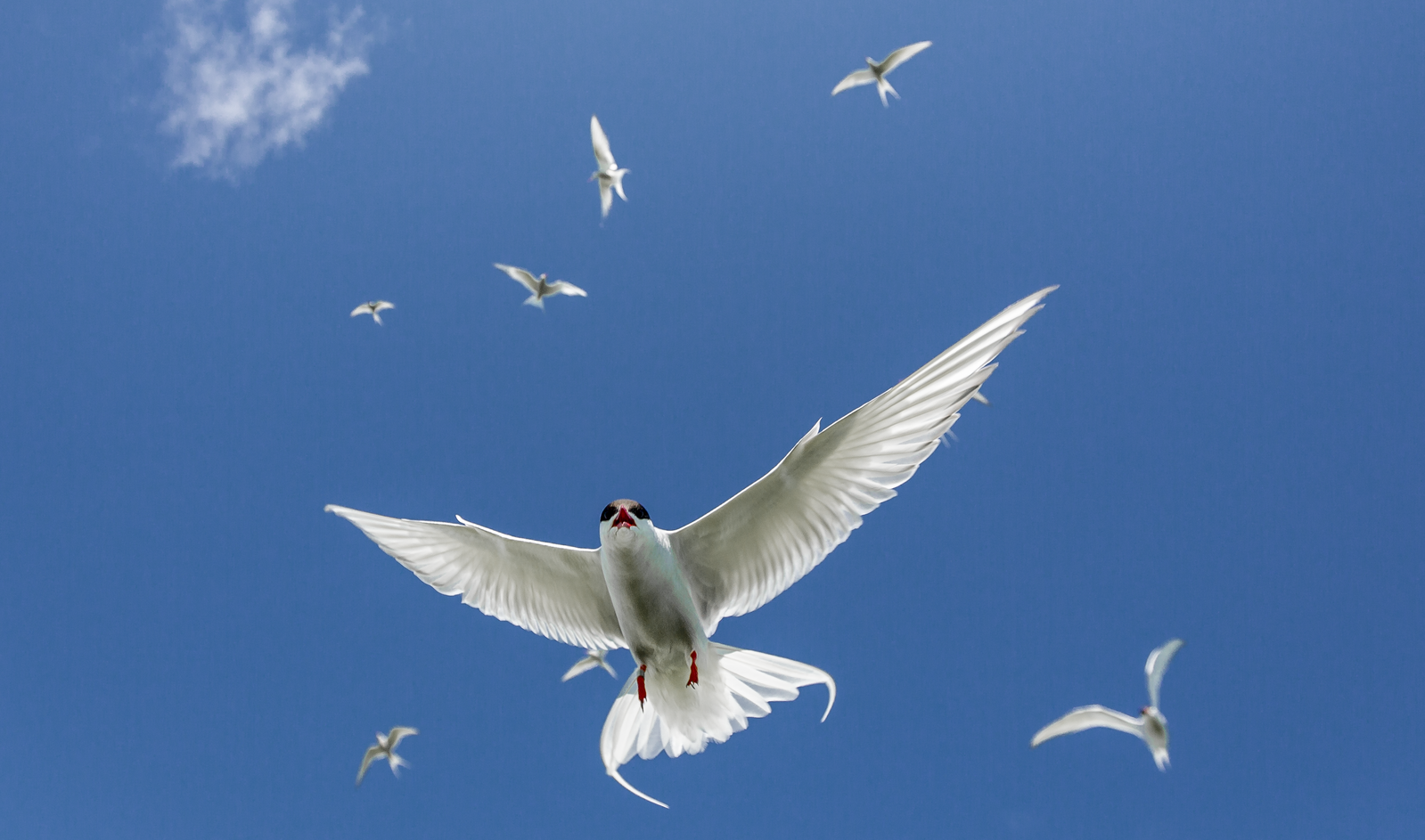Meet the Arctic Tern
The Arctic tern (Sterna paradisaea), usually just called a tern, belongs to the tern family (Sternidae). It is a very delicate bird that weights about 100 gr (3.5 oz). Adult terns have a distinguishing look; a deeply forked tail, black hood, and dark red beak and feet. Other than that, they are white with a pale gray back and black wingtips. Juveniles have dark beaks and feet, and they lack the beautiful tail of the adult terns.
The tern is an Arctic bird and is very characteristic for summertime in the northern hemisphere. It has circumpolar breeding, distributed around Svalbard and Greenland, but is also found in Europe as far south as Britain and Holland. The tern is found all around Iceland but nests are mostly close to the sea. Still, there are some sparse colonies in the highlands near large lakes. The tern arrives in Iceland in April/May. In the minds of many Icelanders, it brings spring to the country just like our beloved Golden plover (Pluvia lisapricaria).

Four Flying Facts about Terns:
- Many terns fly a distance equivalent to about 3 times to the moon and back during their lifespan.
- A flying tern can reach a speed of 37mi/h. It takes her only about 90 days to fly between the poles of the Earth.
- The flight of the tern is a true natural wonder. No other bird takes on such journeys, flying on average 44,100 mi each year.
- Despite the terns‘ great flying abilities, they have some dangerous enemies. The Arctic skuas (Stercorarius parasiticus) are also exceptionally great flyers and are well capable of stealing fish from flying terns.
The Tern’s Family Life
The tern population in Iceland is large but it has declined in recent years. It is estimated that there are 150-250 thousand breeding pairs in the country. The majority of the Europian tern population breeds in Iceland. Large colonies are found around the country such as at Rif, Jökulsárlón, Vík and in Hrísey, which is probably the biggest tern colony in Europe.
A tern’s nest is quite simple. It is a small dent in the ground where the bird lays 2-3 small eggs, brown with dark spots. The tern often starts laying eggs in June and incubates for 20-22 days. The adult birds then feed their young for 3-4 weeks or until it can fly. A tern chick’s menu consists mostly of small fish – sand eels (Ammodytes marinus) by the sea or sticklebacks (Gasterosteus aculeatus) in the highlands. The tern also feeds on insects and invertebrates when fish is scarce. Fluctuations in the Icelandic sand eel population in recent years have had a negative impact on the survival of chicks.

The World’s Best Flyers?
Terns spend most of their life flying between the Arctic and Antarctic, only sitting down for a short rest or to incubate eggs. They are exceptionally good flyers. They often hang still in the air before taking a deep dive to catch food or to frighten an unwanted guest. No other bird in Iceland has this flying ability. Those bold enough to enter a tern colony will soon learn about terns‘ aggressiveness and flying abilities. The whole colony takes flight and the birds start taking sharp dives. They even try to pick the head of the intruder with their sharp beaks. And yes, it hurts! Many birds choose to nest close to tern colonies for protection since breeding terns are an impressive airforce.
The tern is a migratory bird and as soon as the summer ends it starts a long migration to the south. This delicate bird follows the sun and flies to South-Africa when it starts to get dark in the northern hemisphere. A large part of the world population spends the winter months in Antarctica. The tern is, therefore, one of the few that enjoys two summertimes per year and more daylight than any other creature.
Links worth a pick:
Wikipedia: https://en.wikipedia.org/wiki/Arctic_tern
Footage from a tern colony: https://www.youtube.com/watch?v=zLkGb1viN4E
Icelandic version of this article: https://perlan.webdev.is/krian-frabaer-flugmadur/?lang=is
Author: Dr. Þórður Örn Kristjánsson
Photographer: Ragnar Th. Sigurðsson

